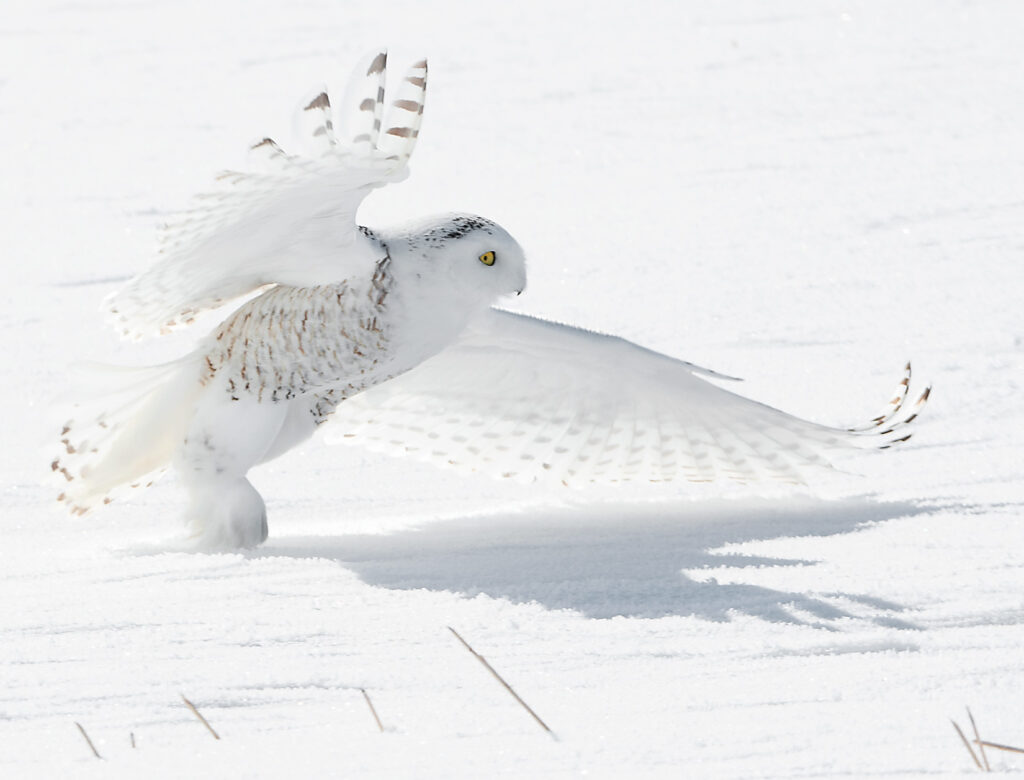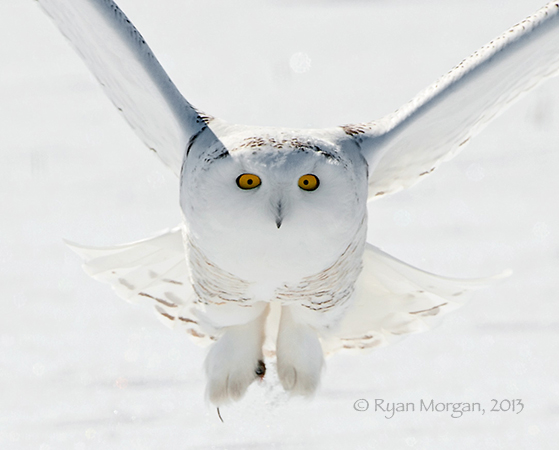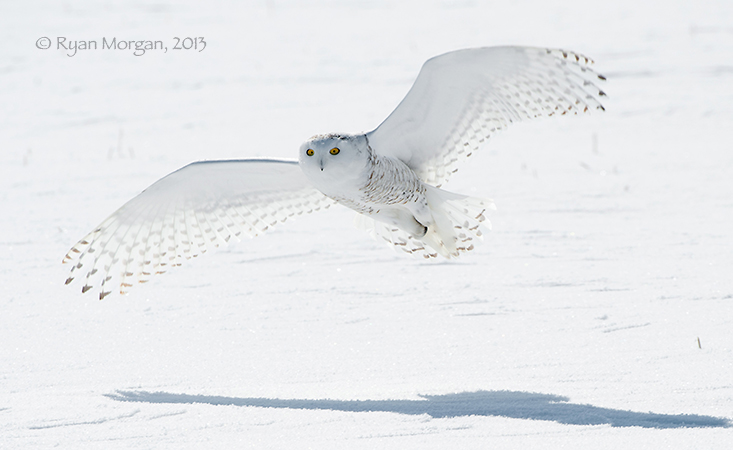Chasing Ghosts of the Prairie: Photographing Snowy Owls East of Calgary
There’s a particular kind of magic that happens when the wide-open prairies east of Calgary are dusted in fresh snow and the wind dies down just long enough for silence to settle. It’s in that hush that you might spot a pale figure perched on a fencepost, staring back with piercing yellow eyes—a snowy owl, the Arctic’s most regal visitor.

Every winter, I set out to photograph these elusive birds in the sprawling fields that stretch beyond the city toward Strathmore, Langdon, and the quiet backroads near Carseland. Armed with a thermos of coffee, a long lens, and a whole lot of patience, I was hoping to catch a glimpse of the elusive “ghost of the north.”
Meet the Snowy Owl
Snowy owls (Bubo scandiacus) are true creatures of the Arctic tundra, spending their summers in the far north, nesting on the ground where the sun never sets. Come winter, when the lemming population (their main food source) crashes or conditions grow too harsh, they head south. And lucky for us, southern Alberta often finds itself on the snowy owl’s winter migration map.

Unlike most owls, snowy owls are diurnal—meaning they’re active during the day. This makes them perfect subjects for wildlife photography. Their stark white plumage (males are whiter; females and juveniles often sport dark barring) makes them stand out in the snowy fields—though you’d be surprised how well they can disappear into the landscape.
When and Where to Find Them
If you’re hoping to photograph snowy owls east of Calgary, winter is your window. The best months are typically late November through early March, depending on the severity of the season.
The flat, open farmland east of Calgary mimics the owl’s natural tundra habitat. Roads like Highway 22X, Range Roads near Strathmore, and areas around Delacour, Langdon, and Indus are good starting points. Keep your eyes peeled on fence posts, irrigation wheels, hay bales, and even utility poles. They can be surprisingly bold, often perching right near the road.
Early morning and late afternoon light offer the most dramatic photo opportunities, especially when the sun hits their feathers just right, creating a soft golden glow against the snow.

Tips for the Journey
- Bring the right gear: A telephoto lens (400mm or longer is ideal) is essential for getting good shots without disturbing the owls.
- Respect their space: These birds are under stress in winter and every calorie counts.
- Dress warm: Alberta winters are no joke. Layer up, especially if you’re hopping in and out of your vehicle.
- Use your car as a blind: Owls are less spooked by vehicles than people on foot. Slowly drive the rural roads and scan carefully.
Fun Facts About Snowy Owls
- They can fly silently thanks to specially adapted feathers that muffle sound—perfect for stealth hunting.
- Snowy owls have zygodactyl feet, meaning two toes face forward and two backward, giving them extra grip when snatching prey.
- They can eat up to 1,600 lemmings a year! In Alberta, they’ll switch to voles, mice, and even birds when their preferred prey isn’t around.
- Their eyesight rivals that of hawks, and their hearing is just as impressive—key for finding prey hidden under snow.
A Final Thought
As I stood on a wind-swept gravel road, camera trained on a snowy owl watching the horizon with silent intensity, I was reminded of how wild and wonderful Alberta’s prairies really are. These birds—symbols of winter, wilderness, and resilience—make our long winters feel a little more enchanted.
If you’re willing to brave the cold and slow down to really look, you just might find yourself face-to-face with one of the most majestic raptors on earth.
Happy owl hunting (with your camera, of course).